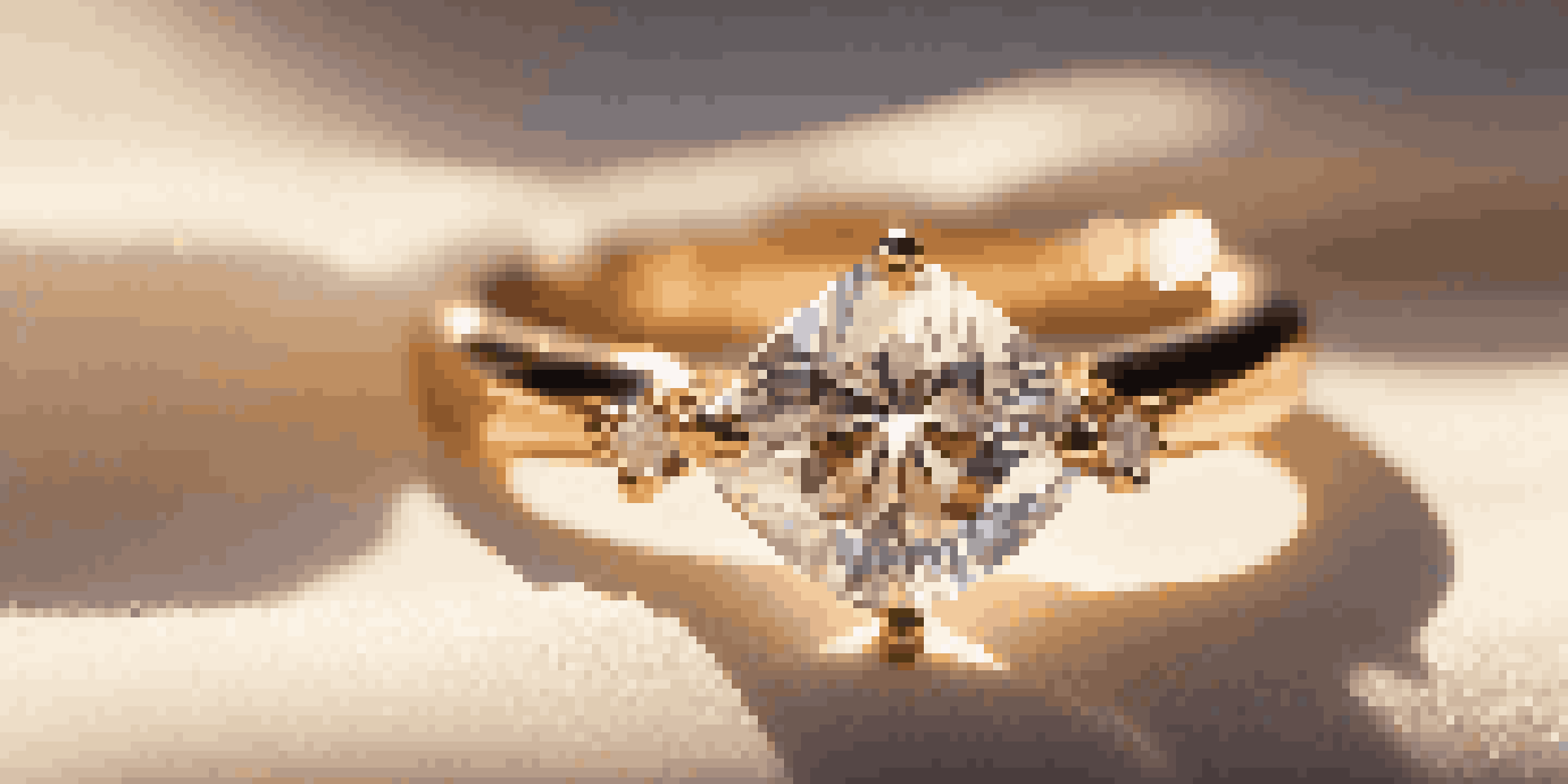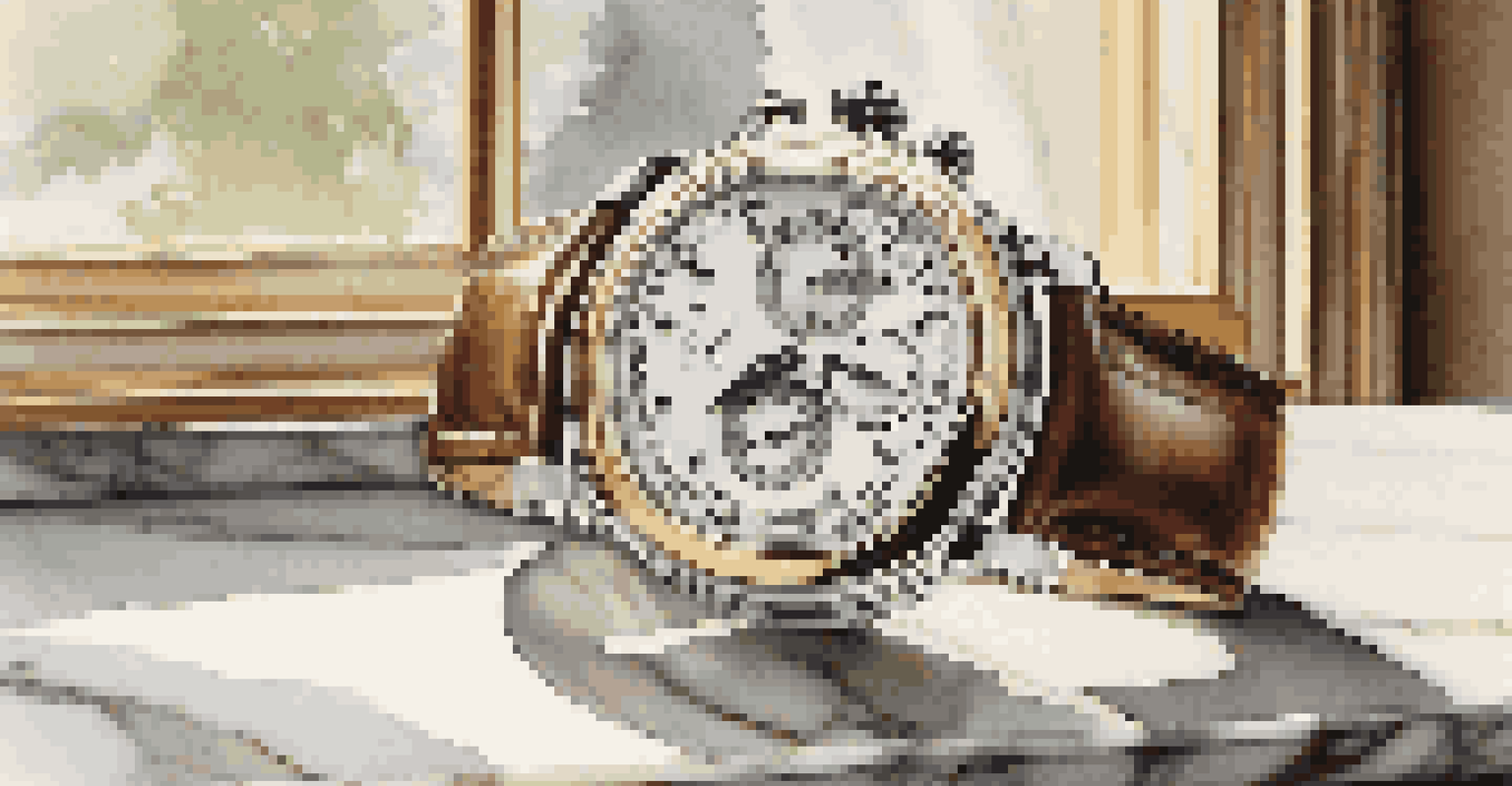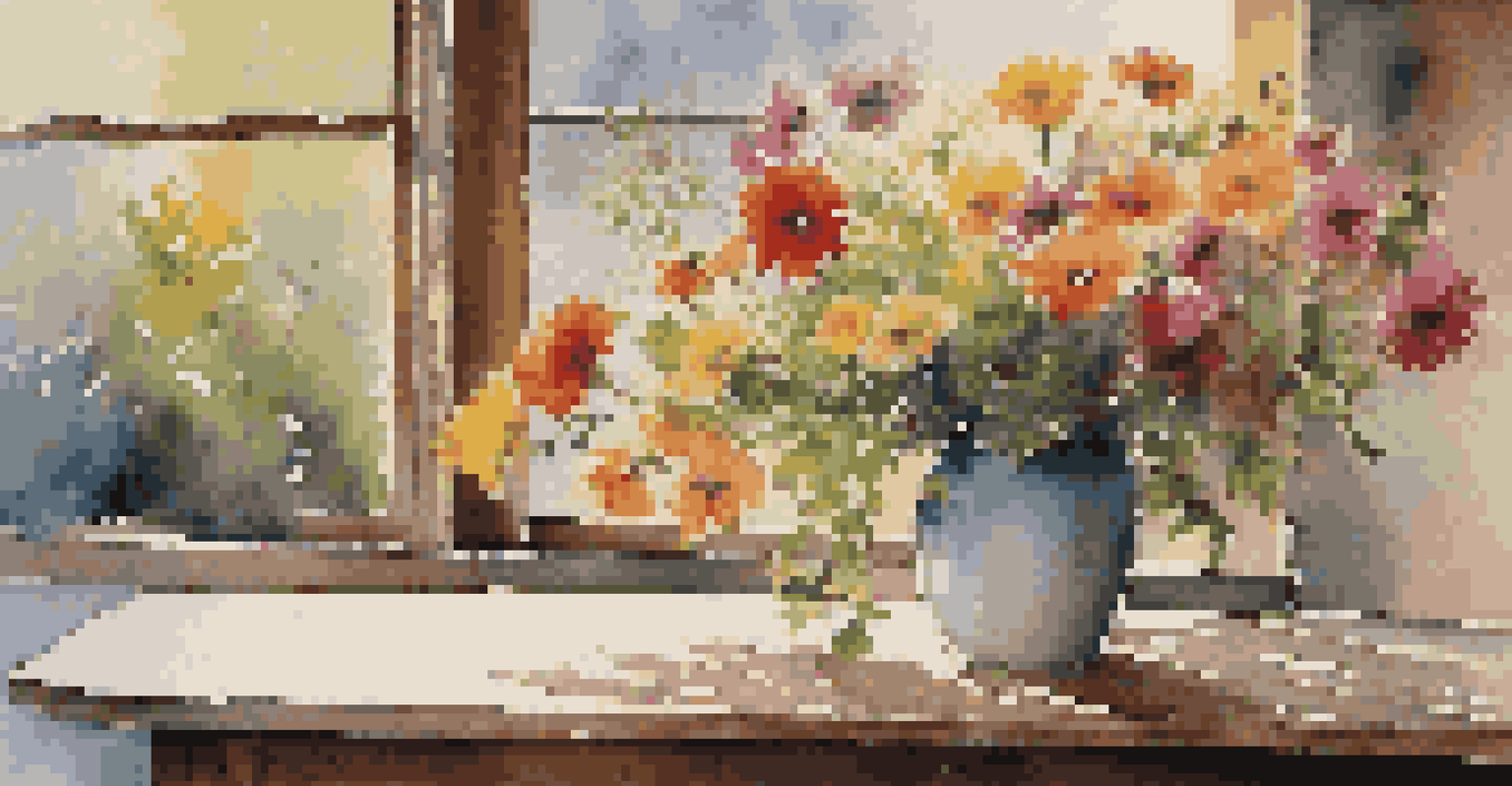How to Use Natural Light in Luxury Photography Effectively

Understanding Natural Light: The Photographer's Best Friend
Natural light can transform your photography, adding depth and warmth that artificial light often lacks. It’s like the perfect seasoning that makes a dish truly gourmet. By understanding how sunlight interacts with different surfaces and textures, you can elevate your luxury photography to new heights.
Natural light is the best light for photography. It brings out the true essence of the subject.
Unlike artificial lighting, which can sometimes create harsh shadows or unnatural tones, natural light offers a soft, flattering quality. This is particularly important in luxury photography where the goal is to convey elegance and sophistication. Imagine capturing a glimmering piece of jewelry; natural light can highlight its sparkle beautifully.
Additionally, natural light changes throughout the day, offering a variety of moods and tones. The golden hour, just after sunrise or before sunset, is revered among photographers for its warm, diffused light that can make any subject look ethereal. Recognizing these moments can significantly enhance your luxury photography.
Choosing the Right Time of Day for Luxury Shots
Timing is everything in photography, especially when working with natural light. Midday sun can create harsh shadows and overexposed highlights, which might not do justice to luxury items. Instead, consider shooting during the golden hour, when the light is softer and warmer, lending a magical quality to your images.

For indoor shoots, the time of day can still greatly impact your results. If shooting near a window, pay attention to how the light shifts throughout the day. Morning light can be bright and energetic, while late afternoon light often casts a beautiful, muted glow.
Natural Light Enhances Photography
Natural light adds depth and warmth, enriching luxury photography with its soft, flattering quality.
Experimenting with different times of day can yield surprising results. Don't be afraid to revisit the same location at various times; you might find that a scene you thought was unremarkable transforms beautifully under different lighting conditions.
Utilizing Reflectors to Enhance Natural Light
Reflectors are a fantastic tool for manipulating natural light, particularly in luxury photography. They can bounce light back onto your subject, filling in shadows and creating a more balanced exposure. Think of them as your trusty sidekick that ensures every detail shines through.
The best camera is the one you have with you, but great lighting can make any camera shine.
You can use simple reflectors like white boards or even metallic surfaces to achieve different effects. For instance, a silver reflector can add a touch of brilliance, enhancing the luxurious feel of your subject. This tactic is especially useful in outdoor settings where the light can be uneven.
Positioning your reflector correctly can make a significant difference in your shots. Experiment with angles to find the sweet spot where the light beautifully illuminates your subject while maintaining that coveted soft look.
Finding the Perfect Location for Natural Light
The location you choose can greatly influence how natural light interacts with your subject. Look for spaces with large windows or open areas that allow light to flood in. A well-lit room can create a stunning backdrop for luxury photography, showcasing products in their best light.
Outdoor locations also offer diverse lighting opportunities. Consider settings with interesting architecture or natural elements that can complement your subject. For luxury items, picturesque parks or chic urban environments can enhance the overall aesthetic.
Timing Matters for Stunning Shots
Choosing the right time of day, especially during the golden hour, can significantly elevate the mood and quality of your images.
Scout your locations at different times to see how they change with the light. What may appear as a dull spot during the day can turn into a breathtaking scene in the early morning or late afternoon.
Adjusting Your Camera Settings for Optimal Light Capture
Understanding your camera settings is crucial when working with natural light. Key settings include ISO, aperture, and shutter speed, all of which can help you capture the nuances of light effectively. For luxury photography, you’ll want to ensure your images are sharp and vibrant.
A lower ISO setting can reduce noise and help maintain image quality, particularly in well-lit environments. Aperture settings can create a beautiful depth of field, allowing your subject to stand out while softly blurring the background.
Experiment with shutter speed to ensure you're not missing the perfect moment. A slower shutter speed can allow more light in but be cautious of camera shake, especially in dimmer conditions. Finding the right balance will help you achieve stunning results.
Incorporating Shadows for Depth and Dimension
While many photographers aim to minimize shadows, in luxury photography, they can add an intriguing layer of depth and dimension. Shadows can create contrast, making your subject pop against the background. Think of them as the unsung heroes of your composition.
To effectively use shadows in your shots, consider the direction of your light source. A low light angle may cast longer shadows, which can evoke a dramatic feel. Alternatively, softer, diffused light can create gentle shadows that add elegance and sophistication.
Reflectors Improve Light Quality
Using reflectors can manipulate natural light to create balanced exposures and enhance the luxurious feel of your subjects.
Experimenting with shadows can lead to some striking images. Don’t shy away from capturing the interplay between light and shadow; it can highlight the luxurious qualities of your subject in unexpected ways.
Editing Techniques to Enhance Natural Light Photos
Post-processing is an essential part of luxury photography, especially when working with natural light. Editing software can help you fine-tune brightness, contrast, and color balance to ensure your images reflect the luxurious feel you want to convey. It's like the final polish on a well-crafted piece of jewelry.
Adjusting exposure can help bring out the details in highlights and shadows, ensuring nothing is lost in the final image. Moreover, subtle color corrections can enhance the natural hues captured in your photograph, adding vibrancy without making it look overly processed.

Remember, the goal of editing is to enhance the natural beauty of your photographs, not to overshadow it. Keep your edits minimal and focused on bringing out the elegance of your subject, allowing the natural light to shine through.